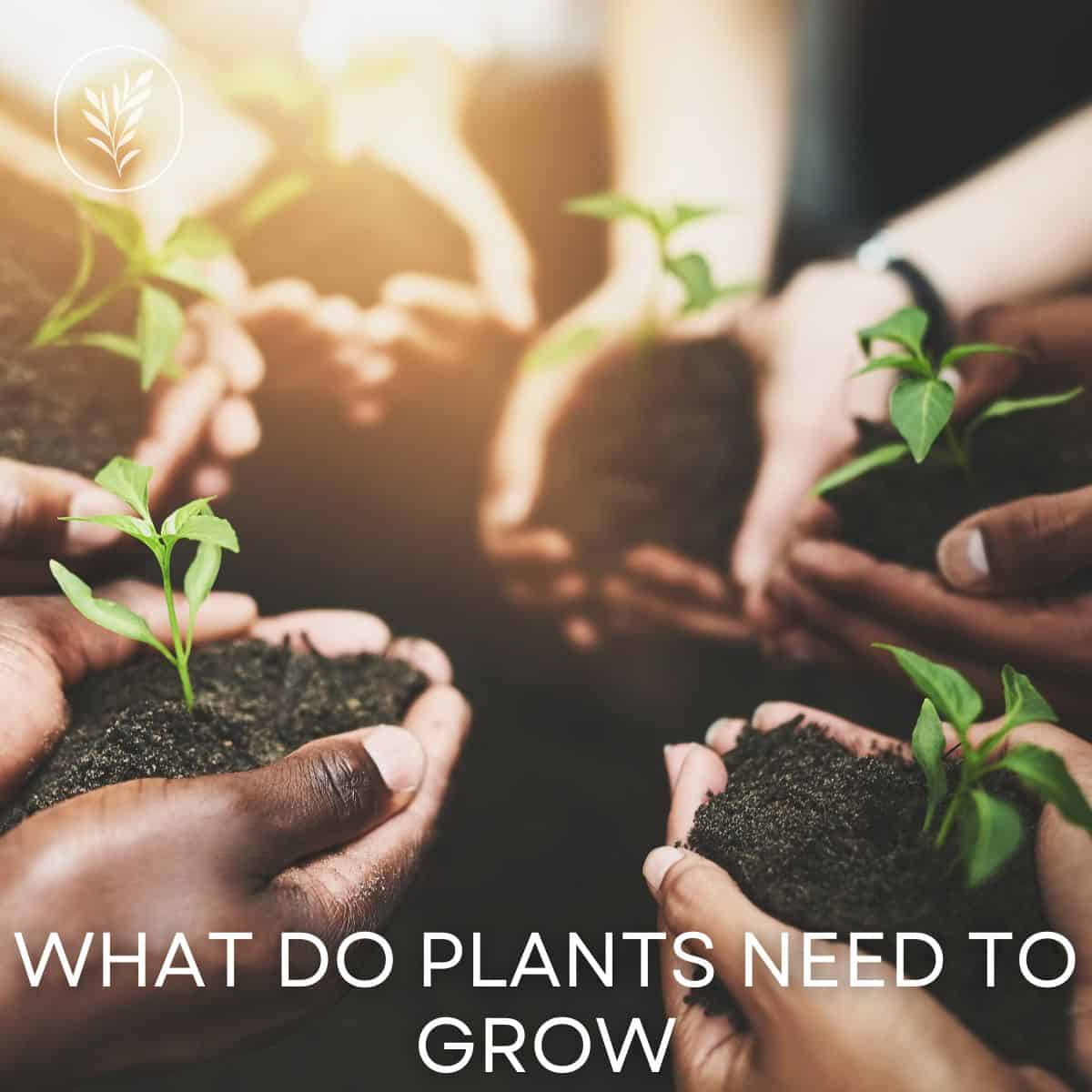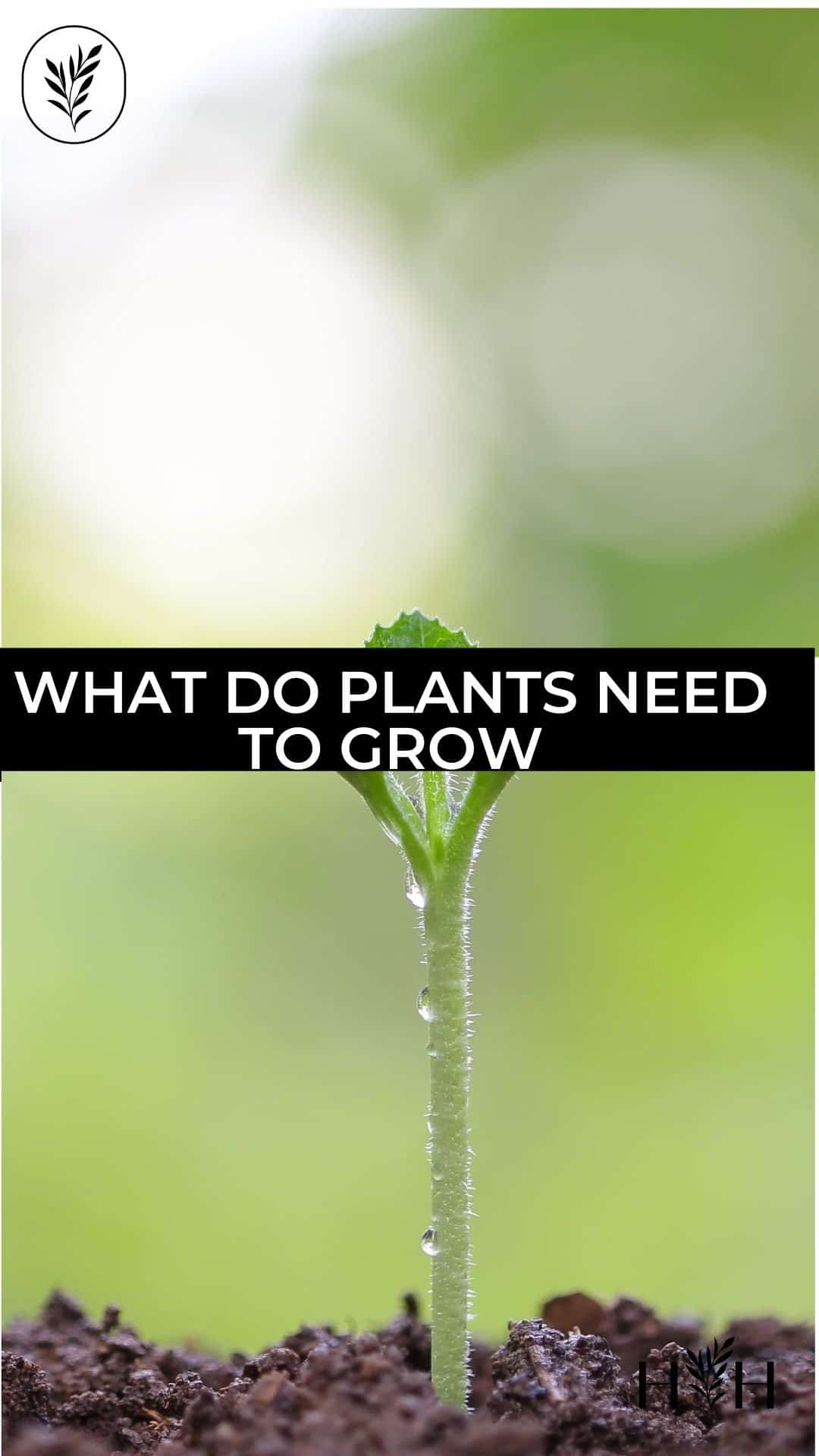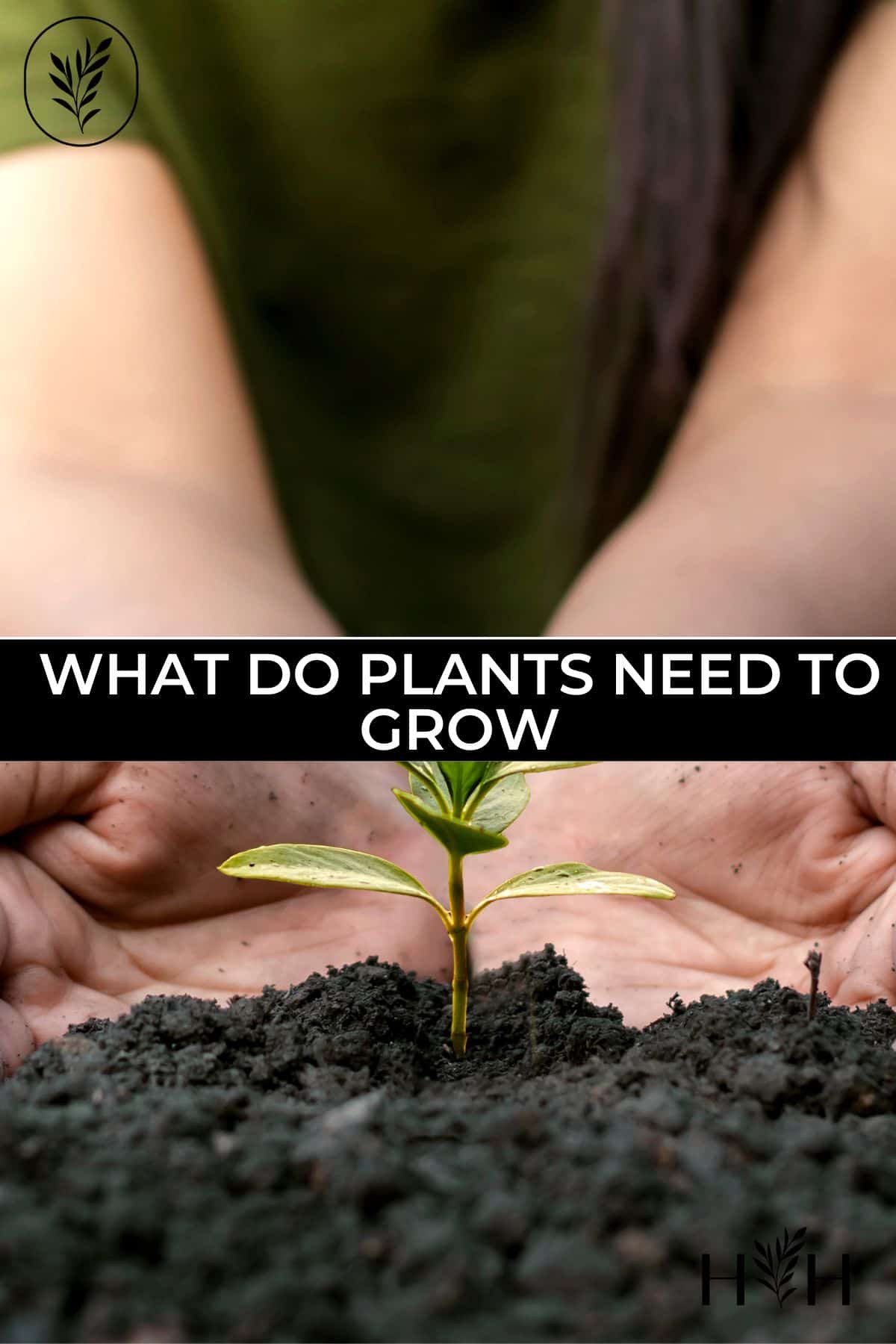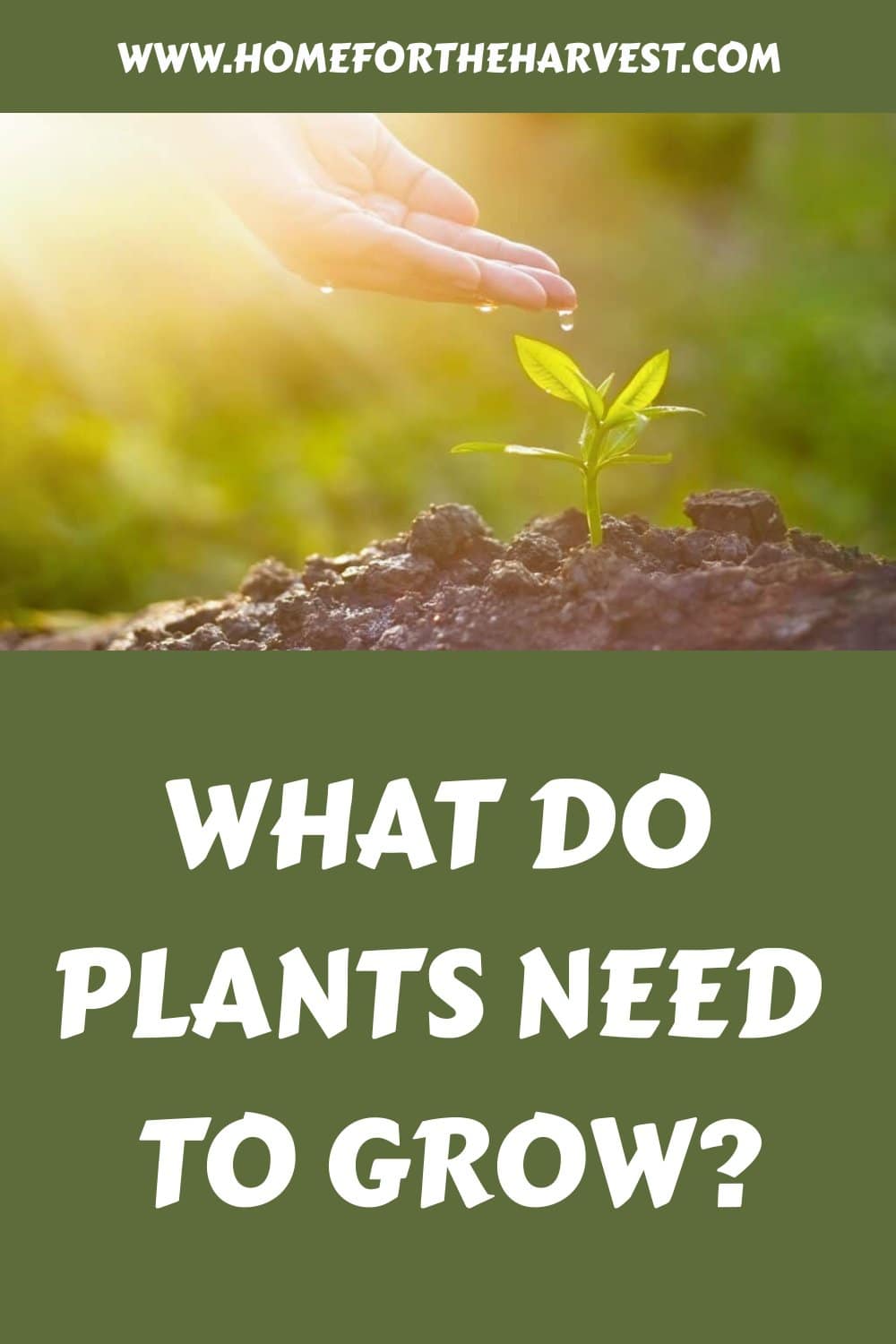Wondering what plants need to grow? Let’s look at all the different inputs that plants require to grow healthy.
All plants need seven main things: sunlight, water, air, nutrients, suitable temperature, room to grow, and time to grow. Other factors that can influence plant growth include ambient humidity, soil type, and human-added inputs like fertilizer.
Read on to learn how to properly tend to all the plants in your care, whether they be vegetables, herbs, fruits, or flowers.
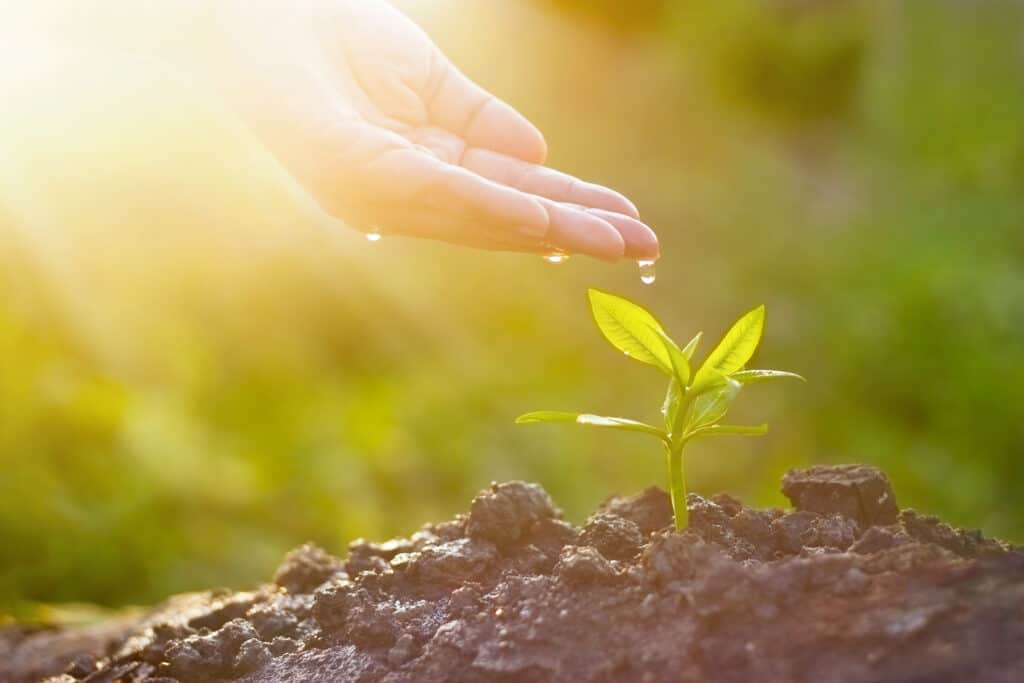
Sunlight for plant photosynthesis
Photosynthesis is not possible if plants don’t have a consistent source of sunlight. Seeds of most types will start to germinate in the ground without light, but they won’t grow or survive very long if they reach the surface and still don’t have access to sunlight.
Some plants need more light than others. Marigolds, petunias, and (unsurprisingly) sunflowers thrive under full sun (a minimum of 6 hours of direct sunlight daily). Tomato plants, other fruiting plants (such as peppers, strawberries, corn, and peas), and melon plants (watermelon, honeydew, and cantaloupe) all require full sun to grow to their full potential.
That being said, some plants will get scorched under full sun in hot climates, such as leafy plants (like lettuce, spinach, and forget-me-not flowers). Other plants require a happy medium of sun and shade, so it’s important to do thorough research for each plant you’d like to grow.
For plants that will burn in full sun, the best solution for this is to put them in the spot that gets the most shade. If there are no shaded places, try planting a few trees around your garden to soak up the sun.
Water
Plants are picky, just like humans, and giving them too much or too little water will cause them to have trouble living their best life. Water is super important to plants; not only is it necessary for photosynthesis, but plants also use it to help regulate their own internal temperature. It also keeps them standing up straight, and it also helps them gain nutrients.
Most groundcover plants need enough water to reach down to one foot (to reach the bottom of their roots). Sure, shallow watering every few days will be easier for you, but if you don’t water them enough each day, the water won’t reach very far down, and their roots will only grow around the surface. Surface roots are more susceptible to rooting, scorching, and death by malnourishment. Read more about why plants need water.
Air (specifically carbon dioxide & oxygen)
Plants need air for both photosynthesis and for respiration. Carbon Dioxide is one of the main ingredients in the chemical reaction for photosynthesis. Plants use carbon dioxide to make carbohydrate sugars, which they store as energy. Plants also need oxygen from the air for aerobic respiration, in which cells convert those stored sugars from photosynthesis into ATP (energy).
The altitude you live at will affect local plant growth drastically. Higher altitudes have less carbon dioxide in the air. Plants will have smaller leaves and smaller yields since they can’t “breathe” as well (Source). If you live somewhere like Florida, this won’t be a problem. But if you’re in Idaho, it might be harder to keep up a garden. It can totally be done; Idaho’s main export is potatoes, after all, so just make sure you’re growing plants that are suited to your climate and environment.
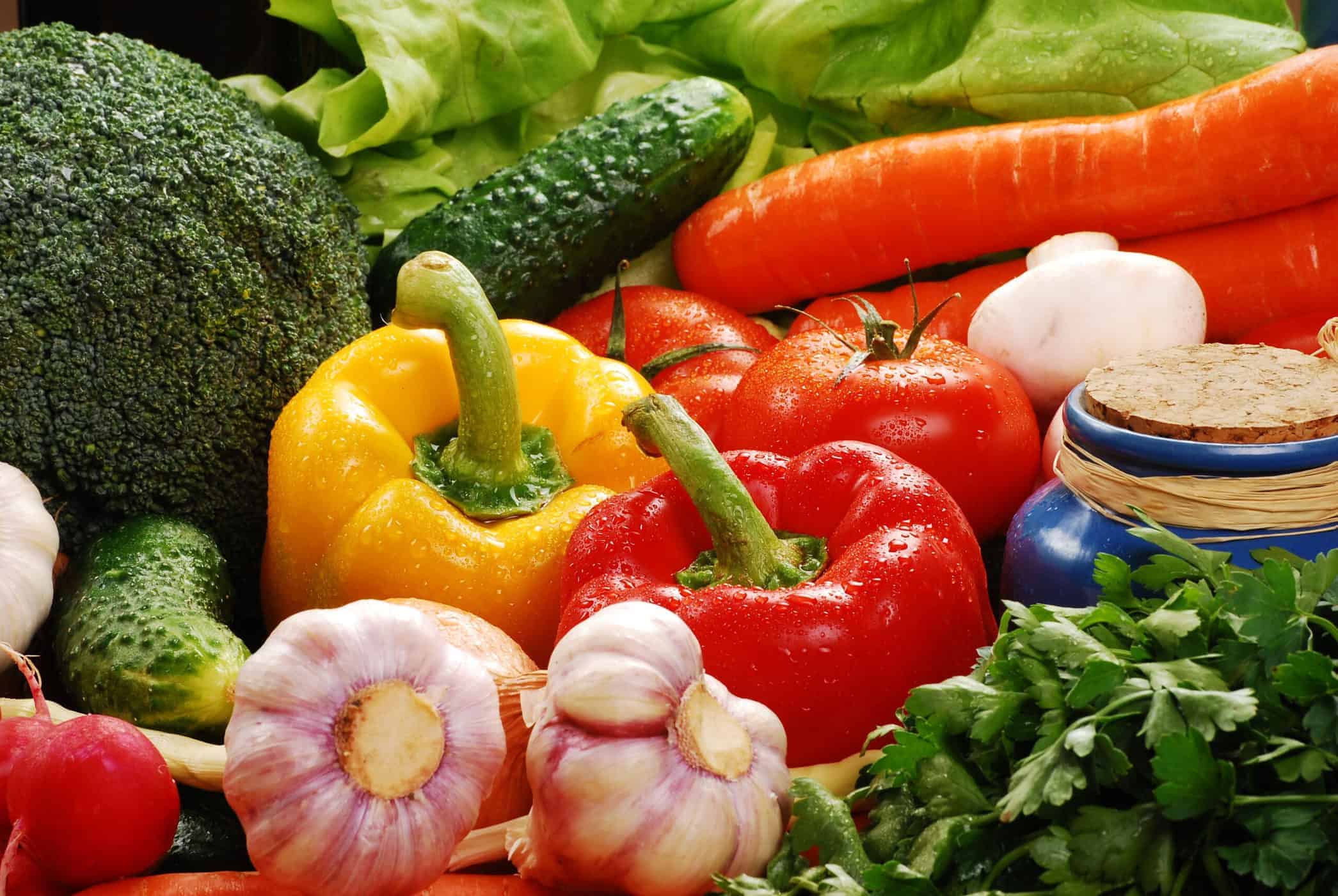
Nutrients
Plants need nutrients, just like humans. Plants get their essential nutrients from the soil they grow in (or from added fertilizer, in the case of cultivated plants). Here are the mineral nutrients that plants need to grow:
Macronutrients:
- nitrogen (N)
- phosphorus (P)
- potassium (K)
- calcium (Ca)
- sulfur (S)
- magnesium (Mg)
- carbon (C)
- oxygen (O)
- hydrogen (H)
Micronutrients (trace minerals):
- iron (Fe)
- boron (B)
- chlorine (Cl)
- manganese (Mn)
- zinc (Zn)
- copper (Cu)
- molybdenum (Mo)
- nickel (Ni)
All of these minerals work together to produce a happy, healthy plant.
Calcium develops cell walls and protects plants from disease. Nitrogen helps leaf growth. Potassium helps absorb and retain water. Magnesium and nitrogen help chlorophyll production, which keeps them nice and green. Sulfur helps protein production and the formation of seeds. Phosphorus contributes to roots and flowers.
If just one nutrient is lacking, the plant’s health will start going downhill. It takes a delicate balance to keep a plant alive; after all, it’s not easy being green. But fortunately, there are plenty of ways to add nitrogen and other plant nutrients to the soil.
“If one of the chemical elements essential to a plant is available in insufficient amounts or in chemical combinations that are poorly absorbed, the deficiency of this element will bring about derangements in plant metabolic processes. Eventually these metabolic disturbances manifest themselves in the development of visible symptoms such as stunted growth, yellowing or purpling of leaves, or other abnormalities.”
Mineral Nutrition of Plants: Principles and Perspectives, by Emanuel Epstein and Arnold J. Bloom
Temperature
Different climates allow growth for certain plants. Plant life in Brazil looks very different from wild plant life in Alaska, and the plants would not survive if they were placed into each other’s environments. Plants that like the heat can perish if the temperature drops below 32 degrees Fahrenheit (0 degrees Celsius). If you have plants growing outside when the temperature drops, you might have to transplant them to pots inside to keep them alive or have a greenhouse.
Wind also affects temperature. Wind doesn’t drop the temperature, but it will make plants feel colder, and plants that need heat might not get what they need with the wind constantly cooling them down. Wind can also dry out the leaves of plants.
Growing produce in the correct seasons can help you avoid problems with temperature. For example, strawberries do most of their growing in the spring and summer. Certain crops can be grown in the winter. Most flowers can survive in spring, summer, and fall temperatures, but some need to be lifted and stored indoors to get through the winter.

Space to grow
We all need space to grow! If you’re growing vegetables, it’s a good idea to keep each row around 18 to 36 inches apart, but spacing varies wildly depending on the plant. Carrots only need to be 3 inches apart, while tomatoes need a 12-inch radius away from all other plants.
When it comes to spring flowers, lean on the cautious side and place them further apart, around 18 to 24 inches. It will be tempting to shove them right next to each other but resist that urge. They won’t look gorgeous right away, but they’ll grow into the space. You’ll have a glorious flowering garden in no time.
Time to grow
Ah, time. Of course, plants need time to grow. But don’t brush this one off that lightly–getting the timing right is extremely important for plants that produce fruits or vegetables. Fruit takes time to ripen, trees take time to grow upward, and lawn grass takes time to fill in. Planting your sprouts at the right time of year is also important because you want to give them the longest growing season possible.


